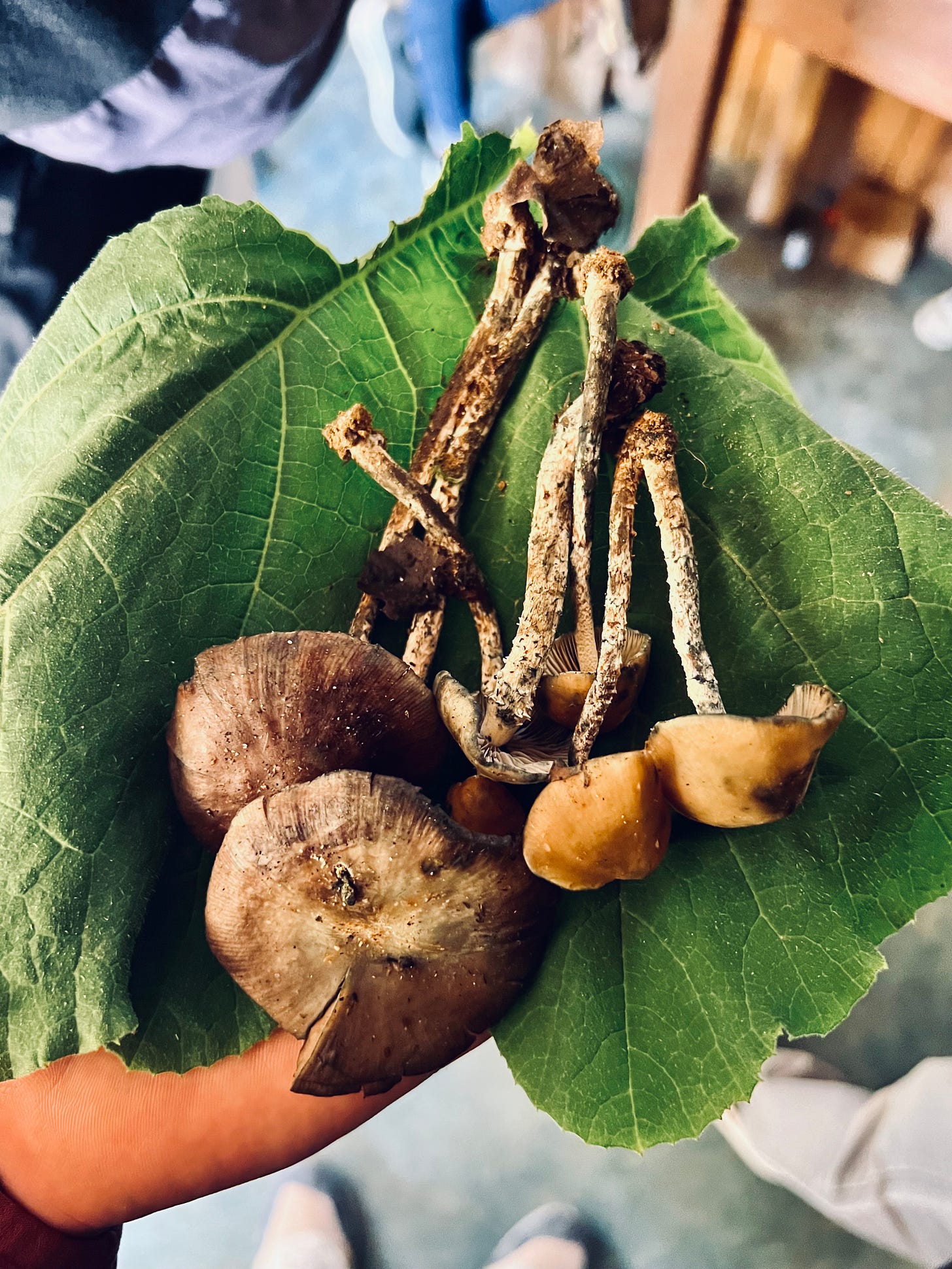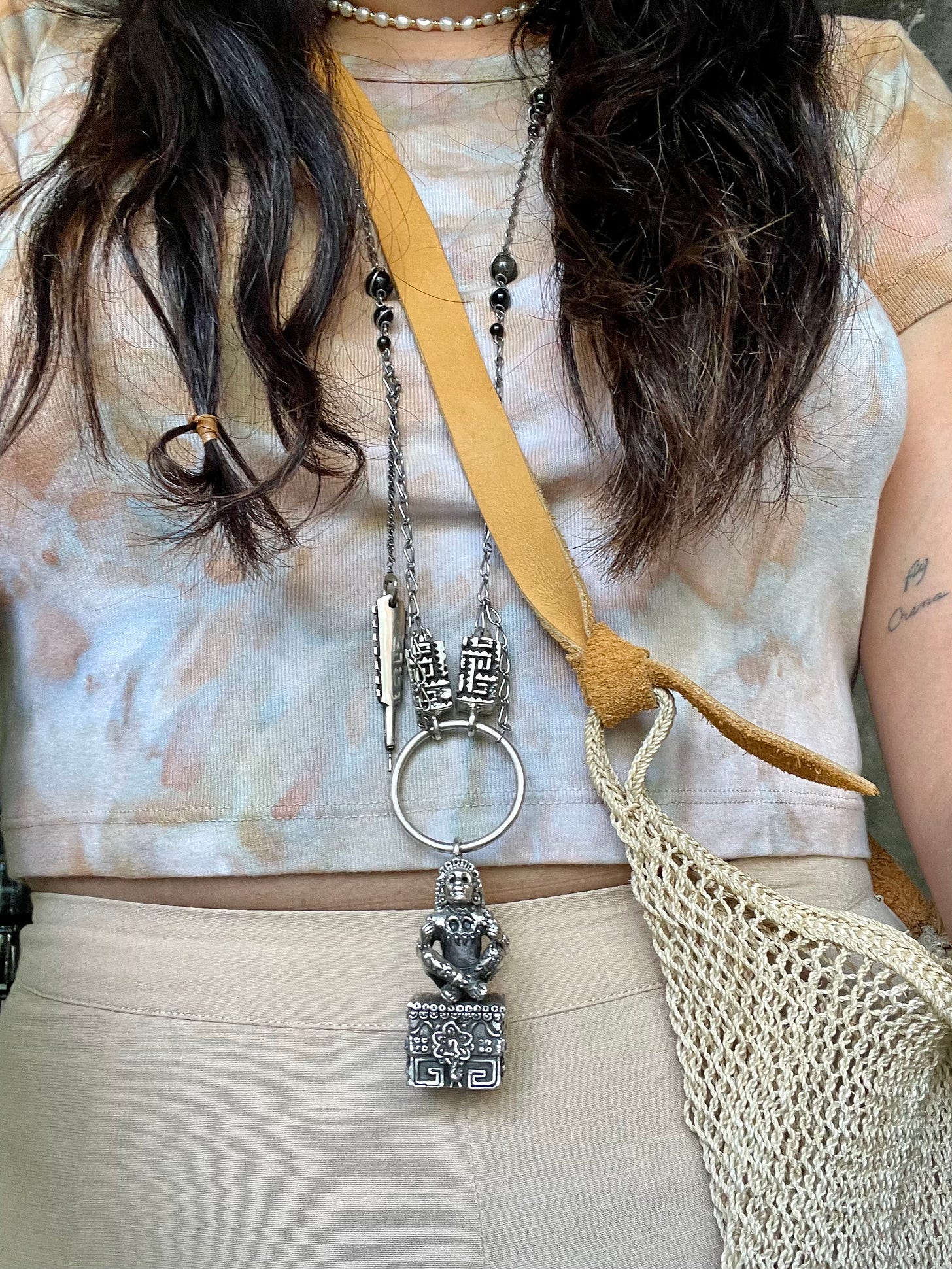Paola en la máscara con olotes as horns at Alcalá 228, the most beautiful casita in Oaxaca City from the López family who brought you Guelaguetza in Los Angeles. Book it here and Live Oaxaca.
I needed the medicina.
It’s been six years since my last ceremonial mushroom journey in San José del Pacífico. San José del Pacífico is a sacred place located in the municipality of San Mateo Río Hondo high in the mountains of the Sierra Sur in Oaxaca at a high altitude of more than 8,000 feet above sea level.
Like many regions in Oaxaca (and other states in Mexico), the law in San José del Pacífico is set by usos y costumbres, which are traditions and customs of Indigenous communities that are officially recognized as local forms of rulership and self-governance. The consumption of sacred plants such as psilocybin mushrooms is legally allowed in this community. This is what has been used as medicine and healing for generations. The mushrooms—edible varieties and psilocybin types—grow wild all around the municipality of San Mateo Río Hondo.
The healing journey begins the moment you step foot in San José and the clouds surround you in a way I can only describe as floating with the clouds.
I had the privilege to receive medicine from my ancestors through Oaxacan friends who have blessed me with the gift of healing. Seven mushrooms called derrumbes (landslides), and also known as maestros (teachers) because they take you on a viaje (journey) to the depths of consciousness. These mushrooms were foraged and selected by a traditional cook from the region who grew up with this sacred medicine. He guided us with intention. He reminded us to let go and to let the hongos (mushrooms) guide us.
We built an altar with offerings of bread, sesame seeds, flowers, apples, peaches, coffee, sunflower seeds, and a statue of Xochipilli that I carry around my neck made by Oaxacan artist, Sabino Guisu. Xochipilli is the “Prince of Flowers,” the god of pleasure, flowers, sexuality, and the arts of poetry, painting, writing, and song. Xochipilli sits on a throne carved with images of hallucinogenic plants.
I am still processing the ceremonial journey in which I traveled with my ancestors. I healed my feminine side. I received answers I didn’t know I needed. The abandonment I’ve encountered in my life by women figures was turned into the foundation that made me the woman I am today. I received clarity and the gift of gratitude that this medicine has given me.
Through this ceremony, I’ve been reflecting on the moments that have bubbled up during my time in Oaxaca. Like the machucada that Chef Thalía Barrios García serves at Cocina de Humo in Oaxaca City. Machucada feels like the dish where chilaquiles began. Partially cooked tortillas that are soft and chewy and compressed in a fistful. Roasted tomatillos are crushed in a molcajete and turned into salsa with guajillo and the secret ingredient below, in this birthday edition featuring a no-recipe recipe.
It’s my birthday on August 29th, and I wish for continuing healing for you and me. The healing where the ego is silenced and we reach our highest purpose. Thank you to all who support me in this journey of learning, unlearning, and growing.
Salsa Verde con Camarón Seco
Salsa Verde with Dried Shrimp
Roast 1 guajillo chile (stem and seeds removed) and 1 pound of peeled tomatillos on a dry comal over medium-high heat until blistered in spots, 10 minutes. In a molcajete (or food processor) add 2 teaspoons of high-quality tiny dried shrimp and crush until ground into a fine powder. Transfer roasted tomatillos and guajillo to the molcajete (or food processor, if using), mash in a circular motion, and combine with the ground shrimp. Season with salt to taste. Use this salsa as a table salsa for anything you wish for an umami boost.
This non-recipe recipe is inspired by my friend, teacher, and mentor, Thalia Barrios García. Visit her restaurants next time you’re in Oaxaca: Levadura de Olla and Cocina de Humo.








Thank you for sharing this Pao. That necklace is so spectacular. What's inside there now????